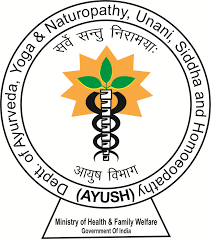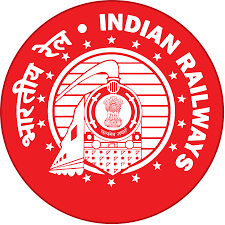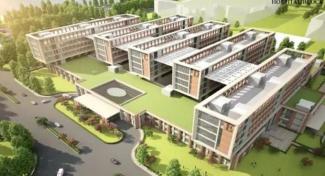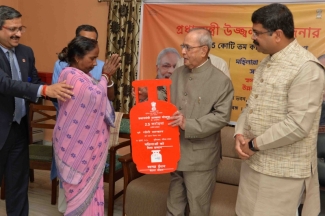
In the union budget 2016-17, rural India is in focus, rather the foundation on which the ‘budget of development’ heavily relies to realise the aim of ‘Transforming India’.
Rural sector gets Rs 87,765 crore of allocation. The single largenst chunk of this amount, Rs 38,500 crore will go to Mahatma Gandhi National Rural Emploment Guarantee Scheme (MGNREGS). Keeping in view the deficient rainfall, which has been 13 per cent less in the last two consecutive years, the government has planned to take every block under drought and rural distress as intensive block under the Deen Dayal Antyodaya Mission. Formation of Self Help Groups (SHGs) will be speeded up to promote multiple livelihoods. Cluster Facilitation Teams (CFT) will be set up under MGNREGS to ensure water conservation and natural resource management. These districts would also be taken up on priority under Pradhan Mantri Krishi Sinchai Yojna.
As per recommendations of the 14 th Finance Commission, the Gram Panchayats and Municipalities are going to get Rs 2.87 lakh crore as Grant in Aid. This is a quantum jump of 228% compared to the previous five-year period. The funds now allocated, translate to an average assistance of over Rs 80 lakh per Gram Panchayat and over Rs 21 crore per Urban Local Body. These enhanced allocations are capable of transforming villages and small towns.
Government plans to develop 300 Rurban Clusters under the Shyama Prasad Mukherjee Rurban Mission. These centres are going to serve as meeting point of the rural and urban people where they could exchange their goods for mutual benefit. The aim is to provide the rural goods an easy access to urban markets. It may boost income of the rural people, particularly farmers, about whom the Prime Minister said earlier on the day of tabling of the budget that their income will be doubled by the year 2022. Interventions in non-farm sectors are also planned to realize this dream.
Rural electrification is an important priority area of the government. Provisions are made to electrify all the villages of the country within two years that is by May 1, 2018.
Centrally sponsored schemes are also linked to Swachha Bharat Mission. The villages becoming free from open defecation shall be given priority allocation as a reward. Rs 9,000 crore has been provided for Swachh Bharat Abhiyan.
To make the rural areas at par with urban areas, this government plans to launch a new Digital Literacy Mission Scheme for rural India. Within three years, that is during its own present manage to govern the country, around 6 crore additional households will be covered under this mission. It is worth motioning here that out of the 16.8 crore rural households as many as 12 crore households do not have computers and are unlikely to have digitally literate persons without the support of government. Two Schemes to promote digital literacy viz. National Digital Literacy Mission and Digital Saksharta Abhiyan (DISHA) are already being implemented.
National Land Record Modernisation Programme has also been revamped to enable the rural folk to have their records in fraction of time and to protect them from fraudulent transfers ownerrship of their lands. It will be implemented as a Central sector scheme with effect from April 1, 2016.
Apart from the rural sector, the Agriculture and Farmers’ welfare sector is given importance, because development in rural areas, in true sense of the term is possible only when agriculture sector is boosted. Since we cannot dream of happiness and prosperity in the rural areas without the development in agriculture, the government has made an allocation of Rs 35,984 crore for this sector.
Irrigation naturally has been given priority because large part of the country is still rain fed. Out of 141 million hectares of net cultivated area in the country, only 46 per cent is covered under irrigation. ‘Pradhan Mantri Krishi Sinchai Yojana’ is to be implemented in mission mode from now onwards. During the current year itself, 28.5 lakh hectares of land will be brought under irrigation, the budget declares.
There is also a provision for a dedicated Long Term Irrigation Fund, which is to be in NABARD with an initial corpus of about Rs 20,000 crore.
Apart from management of rainwater through irrigation projects, the budget has also given priority to sustainable management of ground water resources.
As for implementation of the programmes through our internal resources, the budget has wisely linked MGNREGA with creation of water bodies. A total of 5 lakh farm ponds and dug wells in rain fed areas are to be dug under the scheme.
MGNREGA has also been linked to agriculture under which 10 lakh compost pits for production of organic manure will be taken. A policy for conversion of city waste into compost has also been approved by the Government.
To increase crop yields in rain fed areas, which account for nearly 55% of the country’s arable land, organic farming has been already been promoted. The aim is to bring 5 lakh acres under organic farming over a three year period under Parmparagat Krishi Vikas Yojana. The Government has also launched a value chain based organic farming scheme called “Organic Value Chain Development in North East Region”. The emphasis is on value addition so that organic produce grown in these parts find domestic and export markets.
Incentives are being given for enhancement of pulses production. Rs 500 crores under National Food Security Mission has been assigned to pulses. The number of districts covered has been increased to 622.
Soil Health Card scheme will cover all 14 crore farm holdings by March 2017, and the government is going to provide 2,000 model retail outlets of Fertilizer companies during the next three years having soil and seed testing facilities.
Unified Agricultural Marketing e-Platform is to be established to provide a common e-market platform for wholesale markets.
To enhance the rural connectivity, allocation under Pradhan Mantri Gram Sadak Yojana is increased to Rs 19,000 crore. The government is going to connect remaining 65,000 eligible habitations with all weather rural roads by 2019 (the earlier target was 2021). This Scheme had suffered in the past because of underfunding.
To reduce the burden of loan repayment on farmers, a provision of Rs 15,000 crore has been made in the budget estimate for the year 2016-17 towards interest subversion, obviously in the wake of reported farmer's suicide from various parts of the country. Special focus has been given to ensure adequate and timely flow of credit to the farmers. Against the target of 8.5 lakh crore in 2015-16, the target for agricultural credit in the year 2016-17 will be an all-time high of Rs 9 lakh crore.
Prime Minister Fasal Bima Yojana is another flagship programme under which Rs 5,500 crore has been allocated. It is the path breaking Crop Insurance Scheme.
Social Sector, including education and health care, gets an allocation of Rs 1,51,581 crore.
LPG (cooking gas) is by and large used in urban areas. For the past several years, some rural areas around towns of the country, have been receiving cooking gas connections. This government is extending this facilities further. A sum of Rs 2,000 crore in this year’s Budget is allocated to meet the initial cost of providing these LPG connections. The Scheme will be continued for at least two more years to cover 5 crore BPL households.
An important healthcare scheme is being launched to help such families who cannot afford medical expenditures. Health cover up to Rs 100,000 per family will be provided under this scheme. For senior citizens of age 60 years and above belonging to this category, an additional top-up package up to Rs 30,000 will be provided. Three thousand drug store will also be opened this year under Pradhan Mantri Jan Aushadhi Yojna to provide generic drugs at affordable prices.
‘National Dialysis Services Programme’ is proposed to provide dialysis services in all district hospitals. The patients from rural areas are also going to be benefited from this move, since they are presently not able to go to the big towns and cities where such facilities are available because of the long distance and poverty.
The government is also launching a new scheme under which each bank branch is supposed to provide money for two entrepreneurs (one each from ST and SC category) under Stand up India Scheme. This will benefit at least 2.5 lakh entrepreneurs. This is an important decision since the Reserve bank of India has already asked earlier this year to open branches in rural areas, having population of 5000. Banks in rural areas may triggar economic revolution in the country.
Government has committed to an increasing share in Sarva Shiksha Abhiyan. Apart from this 62 new Navodaya Vidyalayas will be opened in the remaining uncovered districts over the next two years. Quality education is now in focus.
Under Pradhan Mantri Kaushal Vikas Yojana (PMKVY) Rs 1,700 crore has been set aside.
An allocation of Rs 55000 crore has been made for roads other than the rural roads. Rural roads are to be connected to these roads, which include highways. This will be further topped up by additional Rs 15,000 crore to be raised by NHAI through bonds. Thus the total investment in the road sector, including Pradhan Mantri Gram Sadak Yojna (PMGSY), allocation would be Rs 97,000 crore during the year 2016-17.
Roads are also connected with the railways. Together with the capital expenditure of the Railways, the total outlay on roads and railways will be Rs 2,18,000 crore in the year 2016-17. It will greatly enhance convenience of the people.
Finance and Banking sector reforms are being implemented. Pradhan Mantri Mudra Yojna has been further strengthened, from which entrepreneurs are taking loans to establish projects. Many of the projects are being established in the rural areas. Rs 180,000 crore has been set aside for the scheme for this year.
To provide better access to financial services, especially in rural areas, government is going to undertake a massive nationwide rollout of ATMs and Micro ATMs in Post Offices over the next three years. Better access to Banks and availability of their branches in the rural areas are going to pave the way for well being of Rural India.
Governance and ease of doing business is another focus of the government. Direct Benefit Transfer system will further be strengthened. People from rural areas also, especially living below the poverty line, will be given subsidies, wages and many other facilities through their bank accounts. Fair Price shops in the country (majority of them are in rural areas) are to be automated. Of the 5.35 lakh Fair Price Shops in the country, automation facilities will be provided in 3 lakh Fair Price Shops by March the year 2017. Targeted Delivery of Financial and Other Subsidies through Adhar has already been introduced.
In brief, budget the year 2016-17 relies largely on our domestic demand and market through pumping in money into the rural India.
Dr Gyan Pathak
Sr Journalist, Delhi
The 2016-17 budget presented by the Modi government was unique in many ways. It surely did focus on rural India. This piece is excerpts from an article by Dr Gyan Pathak in the cover story of Ekal Prayas of May-June issue.












